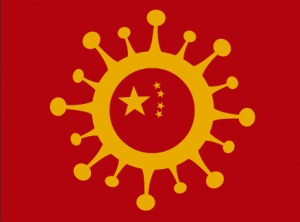GREAT NEWS! With Chinese New Year Approaching, A New Strain Of Deadly Coronavirus Called NeoCoV Could Make A Debut Soon According To A New Study
Source: NeoCoV Jan 28, 2022 3 years, 2 months, 2 weeks, 4 days, 9 hours, 10 minutes ago
Despite the fact that the SARS-CoV-2 emerged sometime in December 2019 in Wuhan-China, it was just before the Chinese New Year celebrations in 2020 that China actually made a public announcement about the seriousness of the disease and started lockdowns. Unfortunately, by then, millions of selfish and irresponsible Chinese had behaved like human vectors and helped spread the virus to every part of the globe and hence that is why the world is in the state that we are in today. The incompetent Ethiopian who is still the head of the WHO also had a large role to play in the spread of the virus around the world as he was against border controls and did not agree with stoppage of air travel!

With the cursed Chinese New Year approaching on the 1st of February 2022, more inauspicious events are expected for 2022 and besides the inevitable emergence of a more lethal SARS-CoV-2 variant anytime soon, researchers from Institute for Vaccine Research and Modern Virology Research Center at the College of Life Sciences, Wuhan University -China are urgently warning that a new deadly coronavirus that is already affecting bats might make a cross-over to humans anytime soon as it has been found to have evolved to be able to bind to human ACE2 receptors. The strain is a type of MERS-Coronavirus.
What is interesting is that the Chinese researchers say that this strain is a distant relative of the Omicron variant as it is believed that the Omicron variant actually originated from mice.
https://www.thailandmedical.news/news/breaking-china-s-scientists-say-omicron-most-probably-originated-from-a-mouse-and-not-from-a-human-host
The study team say that this new strain of coronavirus could very easily make the jump from animals to humans and are warning that the identified
NeoCoV strain is a potential “bio-safety threat.”
The study team "unexpectedly" stumbled upon the new strain that was originally discovered in the African continent and is a "close relative" of Omicron.
This new strain "can efficiently use some types of bat Angiotensin-converting enzyme 2 (ACE2) and, less favorably, human ACE2 for entry."
The timing of the latest discovery comes amid this year's coming Chinese New Year holiday.
Although this NeoCoV strain presently targets bats, the scientists said it has the capability to infect humans as well. And should that happen, it appears the new strain "could not be cross-neutralized by antibodies targeting SARS-CoV-2 or MERS-CoV" meaning natural immunity and vaccine-induced immunity would likely be powerless to stop it.
The study team warns that NeoCoV remains a "potential bio-safety threat" for humans "with both high fatality and transmission rate."
According to the study abstract, “Middle East Respiratory Syndrome coronavirus (MERS-CoV) and several bat coronaviruses employ Dipeptidyl peptidase-4 (DPP4) as their functional receptors. However, the receptor for the new NeoCoV, the closest MERS-CoV relative yet discovered in bats, remains enigmatic
.”
The study team unexpectedly found that NeoCoV and its close relative, PDF-2180-CoV, can efficiently use some types of bat Angiotensin-converting enzyme 2 (ACE2) and, less favorably, human ACE2 for entry.
The two viruses use their spikes' S1 subunit carboxyl-terminal domains (S1-CTD) for high-affinity and species-specific ACE2 binding. Cryo-electron microscopy analysis revealed a novel coronavirus-ACE2 binding interface and a protein-glycan interaction, distinct from other known ACE2-using viruses.
The study team identified a molecular determinant close to the viral binding interface that restricts human ACE2 from supporting NeoCoV infection, especially around residue Asp338. Conversely, NeoCoV efficiently infects human ACE2 expressing cells after a T510F mutation on the receptor-binding motif (RBM).
Alarmingly, the infection could not be cross-neutralized by antibodies targeting SARS-CoV-2 or MERS-CoV.
The study findings report the first case of ACE2 usage in MERS-related viruses, shedding light on a potential bio-safety threat of the human emergence of an ACE2 using 'MERS-CoV-2' with both high fatality and transmission rate.
The study findings were published on a preprint server and are currently being peer reviewed.
https://www.biorxiv.org/content/10.1101/2022.01.24.477490v1
The study findings importantly revealed that single residue substitution increasing local hydrophobicity around site 510 could enhance the virus affinity for hACE2 and enable the NeoCoV to infect human cells expressing ACE2.
Considering the extensive mutations in the RBD regions of the SARS-CoV-2 variants, especially the heavily mutated omicron variant, these viruses may hold a latent potential to infect humans through further adaptation via antigenic drift. It is also very likely that their relatives with human emergence potential are already circulating somewhere in nature!
The WHO, ECDC and US CDC have already been made aware of the discovery.
For more about
NeoCoV, keep on logging to Thailand Medical News.
